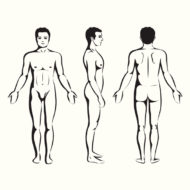Rudolf Laban noted that movement occurs in patterned phrases of preparation, exertion, and recuperation. When I was learning to analyze movement, I found applying this structure helped me see movement events more clearly.
We all have movement habits; that is, there is a pattern to each individual’s movement behavior in which certain facets of movement occur more frequently than others. The pattern is real, but it takes time to see it. And this is where phrasing is helpful.
Preparation in observing actually has two parts: relaxation and attunement. … Read More

